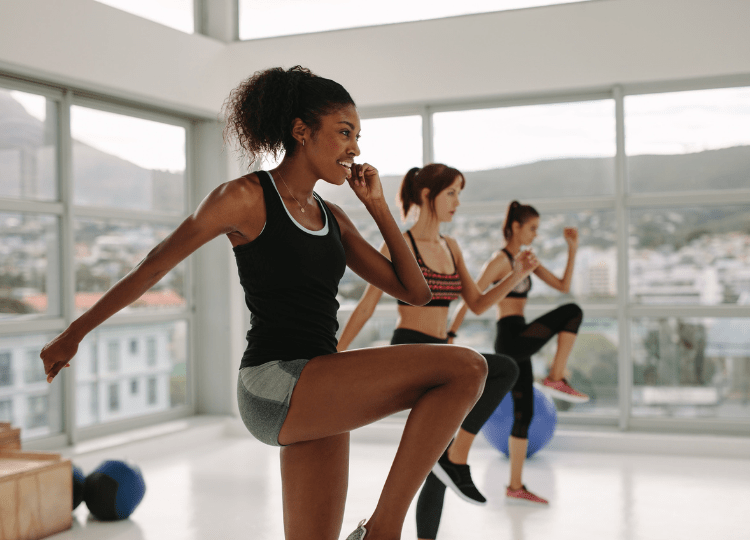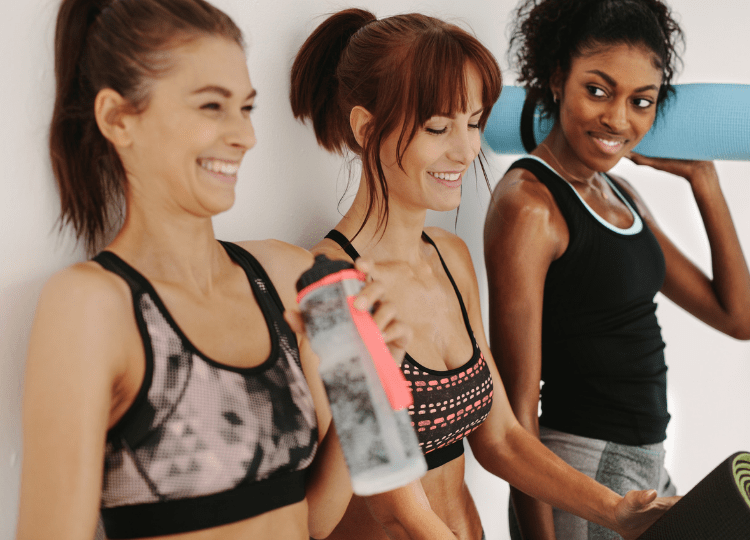Whether you are sick and tired of being “mansplained” to all the time, or you like the idea of workout classes that are specifically tailored to women, the rise of women-only gyms have certainly caught our attention.
Over the years these gyms have slowly crept into the local gym landscape and quietly gained loyal followings and raving reviews… and look like they could genuinely disrupt the future of brick and mortar gyms as well know it.
Although they made a surge in the 90s led by Curves (which recently went into trouble with many of their gyms closing down), the recent rise of women-only gyms at a local level seems somewhat different this time. Boutique-style female focused gyms, even some specializing in classes less commonly associated with women such as strength training, are suddenly racking up impressive reviews and customer feedback.
With the hashtag #womenonlygyms gaining over 18 million views on TikTok alone this past year, and over 37,000 people actively searching for “women only gyms” in Google each month, it’s clear the very concept is resonating, especially with a younger audience.
What’s the Hype
The movement around women-only gyms is contentious… with many arguing, by definition, it lacks inclusivity and discriminates based on gender. On the other side, users express that these gyms offer them a safe place to workout, because they in fact, feel excluded from regular gyms, due to the constant harassment they face as women.
As well as dedicated female gyms, many popular gym and fitness chains are taking note, offering women-only zones or women-only classes, as a way to appease this movement.

Benefits of Women-Only Gyms
Safe Space
The unfortunate reality is many women quit gyms due to harassment. There are countless stories of women who simply get fed up by constantly being harassed in their local gyms… and they simply feel the only solution is for them to quit.
Having a space they feel comfortable in could translate to attending the gym more often… which is going to lead to healthier populations.
Tailored Classes
Another clear benefit of women-only gyms is the fact they can tailor classes very specifically to their audience. Although there’s certainly no reason why men and women can’t do the same exercises, there is often a preference, and certain classes may naturally be more popular based on genders.
We would hope that women-only gyms can in fact encourage more women to follow workout routines such as strength training with weights, as opposed to workouts that are considered more “feminine” such as yoga or Pilates.
Having female instructors lead a class of women in Olympic lifting, for example, may get a better response than in a mixed class.
Intimidation
A word that is often associated with gyms, especially the strength training areas and associated equipment within gyms, is intimidation.
Women often feel intimidated to venture into these parts of the gym, which consequently influences how they exercise and workout. This unfortunately means many women often skip strength training simply because they don’t enjoy the environment that is often associated with these workouts.
Especially if you’re a beginner, there is certainly some anxiety about performing exercises incorrectly and feeling judged, which decreases motivation and is likely going to result and someone convincing themselves it’s easier just to not do the exercise.
Feel more Comfortable
If women feel more comfortable in their surroundings, it’s likely going to lead to a better workout. Without having to worry about being approached in the gym, women are able to double down on what they actually came to the gym for…to get their sweat on!
The Downfall
Ultimately, there are certainly criticisms and downfalls of women-only gyms.
The significance of these downfalls likely depends on specific gym rules and approach, and how strict they make it. The concept of discriminating based on gender will always divide opinion and there are certainly some valid examples whereby this sort of discrimination can have significant negative consequences, such as with the trans community and those who identify as non-binary.
Women-only gyms will likely need to think carefully about how they treat this communities if they want to avoid backlash.

Finding a Local Women-Only Gym Near You
Finding a local women-only gym near you couldn’t be easier. If you simply search for “women only gyms” in Google, you’ll likely be met with multiple options in most cities, especially if you live in the US, Canada, Europe or Australia.
Many larger gyms have cottoned on to this trend too, and will include women-only zones in their gyms, so this might offer you a similar experience in a more traditional gym.
Although the Curves franchise struggled in recent years, this new breed of the women-only gyms seem to be thriving, operating on a smaller scale.
Bottom Line
Whether the answer is strict women-only gyms, or in fact, a more general trend towards very tailored exercise spaces, whether that be based on interest, gender, age, or equipment preferences, we think there is a shift happening within fitness at the moment, whereby people are looking for more personalised exercise experiences.
Ultimately, women-only gyms raise a fascinating debate about the true meaning of inclusivity and whether dedicated spaces for just women is a better solution and helps make them feel more inclusive, by actually excluding men.
What’s clear, however, is that regardless of whether you think women-only gyms are amazing or not, there are clearly some common occurrences about what women experience in gyms all around the world that need to be addressed… namely around forms of harassment, patronising comments, and inappropriate behaviour towards them. Gyms should probably look to address this as a key priority and take accountability to ensure that their spaces are safe for everyone and that people, no matter what their gender, race, or religion is, feel happy.
Assuming women-only gyms can maintain an inclusive view on gender identity and challenge what a “feminine” workout looks like, we can’t see this trend slowing down anytime soon.
Related Articles
